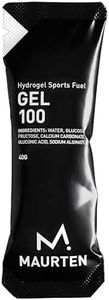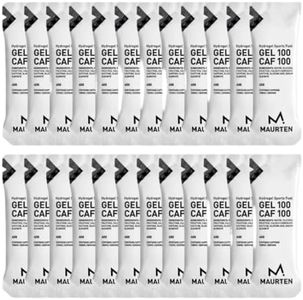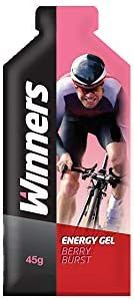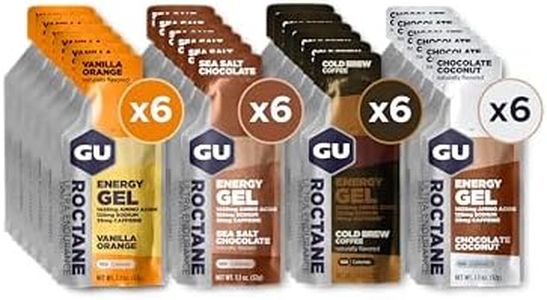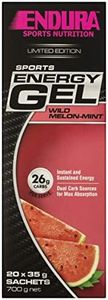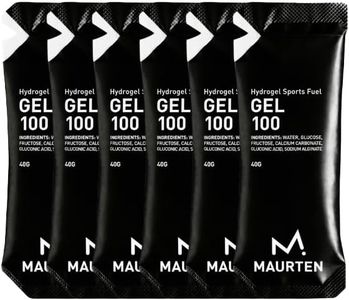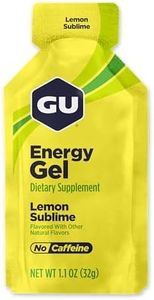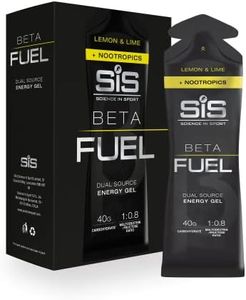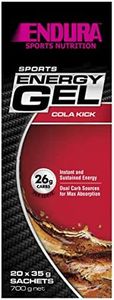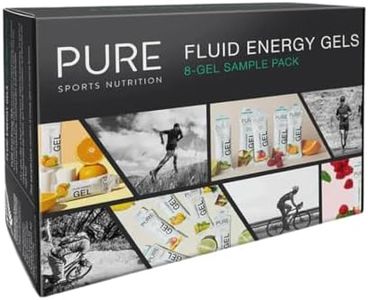We Use CookiesWe use cookies to enhance the security, performance,
functionality and for analytical and promotional activities. By continuing to browse this site you
are agreeing to our privacy policy
10 Best Energy Gels
From leading brands and best sellers available on the web.Buying Guide for the Best Energy Gels
Choosing the right energy gel can really enhance your performance whether you’re running, cycling, or engaging in any endurance sport. Energy gels are designed to give you a quick, easily digestible source of carbohydrates and energy during exercise. However, each gel can be quite different, and the right one for you will depend on your activity, your body, and your preferences. It’s important to understand what’s inside these gels and how different features might affect your performance or comfort.Carbohydrate ContentCarbohydrate content refers to how much energy (in the form of carbohydrates) each gel provides. This is critical because your body relies on carbs for fuel during long or intense exercise. Gels can range from around 18g to 30g or more of carbs. Lower carb gels may suit shorter workouts or those who don’t need as much energy, while higher carb options are better for longer duration or high-intensity efforts. Picking the best one depends on your energy needs and how quickly you digest carbohydrates during activity.
Type of CarbohydrateEnergy gels usually contain sugars like glucose, fructose, or maltodextrin. The type of carb affects how fast the energy becomes available. Glucose is absorbed quickly, giving a rapid energy boost, while fructose is processed slower, providing sustained energy. Some gels mix carb sources to maximize absorption. If you have a sensitive stomach, you might want to test different blends to see which you tolerate best. For longer events, a mixed carb gel can be helpful for steady energy.
Flavor and TextureThis means how the gel tastes (for example, fruity or dessert flavors) and its physical feel when eating it (runny or thick). Since you’ll be using these during exercise, you want a flavor and texture that’s enjoyable and easy to swallow, especially if you plan to take multiple gels. Lighter, less sweet gels are good if you get flavor fatigue, while thicker gels may be more difficult to consume on the move. Consider your own taste preferences and comfort.
Caffeine ContentSome energy gels include caffeine, which can help with alertness and decrease the feeling of fatigue. The amount can range from zero up to about 100mg per gel. If you are sensitive to caffeine or usually avoid it, choose caffeine-free gels. If you want an extra mental kick late in an event or workout, a caffeinated gel might help. Always consider how your body responds to caffeine, especially during exercise.
ElectrolytesGels may include minerals like sodium, potassium, or magnesium to help replace what you lose in sweat and keep your muscles working properly. Higher amounts may be useful in hot weather or long durations, while low or no electrolytes might be fine for cooler, shorter efforts. Think about your sweat rate and how much you’ll need to replenish based on your personal hydration needs and activity conditions.
Additives and AllergensSome gels contain added vitamins, amino acids, or preservatives, and might be made with or without allergens like gluten, dairy, or soy. If you have dietary restrictions, allergies, or sensitivity to artificial ingredients, always check the ingredient list. Natural or simple ingredient gels may be better if you want to avoid artificial additives.
Size and PackagingThis refers to how big the gel sachet is and how easy it is to open and carry. Larger packs provide more energy but can be bulky, while smaller ones are portable but may not be enough for long sessions. If you want to minimize waste or need to consume gels quickly and with one hand, consider the practicality of the packaging for your sport or event.

